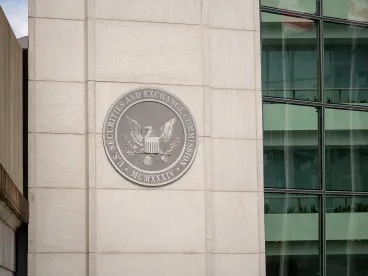Section 17(a) of the Securities Act of 1933 is one of a handful of federal laws and regulations that make it unlawful for companies and their executives to mislead investors. While lawsuits, administrative enforcement actions, and criminal prosecutions under Section 10(b) of the Securities and Exchange Act of 1934 have traditionally been more common than proceedings under Section 17(a), this is beginning to change, and the U.S. Securities and Exchange Commission (SEC) has shown an increased willingness to pursue cases under Section 17(a) in recent years.
Importantly, Section 17(a) also provides a private cause of action in civil securities fraud litigation in some jurisdictions. As the Cornell Law School’s Legal Information Institute (LII) explains, “Some courts have found an implied right of private action under this provision, though this is becoming a less favored position.
However, some courts continue to accept private suits under this provision.” Unlike Section 10(b) and Rule 10b-5, Section 17(a) does not require proof of scienter (i.e. knowingness, willfulness, or intent). As a result, it allows plaintiffs to pursue claims in many cases in which Section 10(b) and Rule 10b-5 do not apply. This is a critical difference, and it is one that requires particular attention in Section 17(a) litigation.
Understanding the Prohibitions of Section 17(a)
Section 17(a) of the Securities Act of 1933 prohibits companies, their executives, and others from engaging in fraudulent contact that negatively impacts investors. As many commentators and legal scholars have noted, the prohibitions in Section 17(a) closely align with those in Rule 10b-5, which defines a “manipulative or deceptive device” under Section 10(b) of the Securities and Exchange Act of 1934.
With that said, there are some important differences between Section 17(a) and Rule 10b-5, most notably the lack of a scienter requirement in Section 17(a). As a result, companies and their leadership teams must have a clear understanding of Section 17(a), and they must be prepared to defend against allegations under Section 17(a) in securities litigation.
To understand the prohibitions of Section 17(a) of the Securities Act of 1933, it is best to begin with the language of the statute itself. Under Section 17(a):
“It shall be unlawful for any person in the offer or sale of any securities . . . by the use of any means or instruments of transportation or communication in interstate commerce or by use of the mails, directly or indirectly—
“(1) to employ any device, scheme, or artifice to defraud, or
“(2) to obtain money or property by means of any untrue statement of a material fact or any omission to state a material fact necessary in order to make the statements made, in light of the circumstances under which they were made, not misleading; or
“(3) to engage in any transaction, practice, or course of business which operates or would operate as a fraud or deceit upon the purchaser.”
The reference in Section 17(a) to “means or instruments of transportation or communication” is broad enough to cover all forms of communication via the Internet. As a result, while Section 17(a) is approaching 90 years old, it still remains entirely relevant in 2021. It covers telephonic and mailed communications as well; and, as such, it applies to virtually all communications regarding the offer or sale of securities.
The three subparts of Section 17(a) are disjunctive, meaning that proof of a violation of any one of the three subparts is sufficient to establish liability (or culpability, in the case of criminal prosecution). Thus, it is possible to face litigation under Section 17(a) based upon allegations of any one of the following:
-
Using a device, scheme, or artifice to defraud in connection with the offer or sale of any security;
-
Obtaining anything of value through a material misstatement or omission made in connection with the offer or sale of any security; or,
-
Engaging in any transaction, practice, or course of business that defrauds or deceives the purchaser of a security.
Anyone who is familiar with Section 10(b) and/or Rule 10b-5 will instantly recognize these prohibitions, as they are very similar to those contained in these other sources of authority. However, as noted above, Section 17(a) does not require a scienter, and this means that plaintiffs and the SEC can pursue claims under Section 17(a) in cases in which it would not be possible to state a cause of action under Section 10(b) or Rule 10b-5.
To clarify, in criminal cases under Section 17(a), proof of scienter is required. Section 24 of the Securities Act of 1933 provides for the criminal prosecution of “willful” violations of Section 17(a) only. Thus, while negligence is sufficient to support civil litigation or administrative enforcement under Section 17(a), the U.S. Department of Justice (DOJ) must prove willfulness in order to pursue criminal charges in federal district court.
Understanding the Risks of Litigation Under Section 17(a)
Aside from the limited jurisdictional availability of a private right of action, it is not entirely clear why the SEC and private plaintiffs have relied less on Section 17(a) than Section 10(b) and Rule 10b-5 in the past. However, as the SEC and private plaintiffs continue to file more cases under Section 17(a), the trend is only likely to grow. Thus, companies, their executives, and others who are at risk for facing allegations or charges need to be cognizant of the prohibitions contained in Section 17(a)—and they must be aware of the risks of violating these prohibitions as well.
SEC Administrative or Civil Enforcement Litigation
In SEC enforcement proceedings under Section 17(a), companies, executives, and other targets can face injunctions and monetary liability. These proceedings can flow from formal or informal investigations, and the SEC has substantial authority (including the authority to issue judicially-enforceable subpoenas) to conduct inquiries focused on uncovering fraudulent practices affecting investors or the securities market. The SEC’s Enforcement Division is extremely active in its enforcement efforts; and, as noted above, the Commission has demonstrated an enhanced focus on pursuing cases under Section 17(a) in recent years.
DOJ Criminal Litigation
If an SEC investigation uncovers evidence of a willful violation of Section 17(a), the Commission can refer the case to the DOJ for criminal prosecution. Under Section 24 of the Securities Act of 1933, willful violations can carry fines of $10,000 and up to five years of federal imprisonment.
When pursuing criminal securities fraud cases, federal prosecutors will often file multiple charges. As a result, in addition to facing charges under Sections 17(a) and 24 of the Securities Act of 1933, defendants may also face charges under Sections 10(b) and 32 of the Securities and Exchange Act of 1934, as well as charges for mail fraud, wire fraud, conspiracy, and various other federal crimes.
Many of these crimes carry penalties that far exceed those that can be imposed under the Securities Act of 1933; and, in large-scale securities fraud cases, it is not unusual for defendants to face millions of dollars in fines along with decades of federal imprisonment.
Private Civil Litigation (in Relevant Jurisdictions)
In the jurisdictions that continue to recognize a private right of action under Section 17(a), the ability to pursue damages based on negligence once again serves as a critical distinction between litigation under Section 17(a) and litigation under Section 10(b) and Rule 10b-5. Savvy plaintiffs’ lawyers will carefully evaluate both types of claims, and they will construct complaints that provide as many options as possible for a judge or jury to award damages.
With this in mind, defendants facing private securities fraud lawsuits must take an equally broad approach. They must carefully assess each element of each claim set forth in the plaintiff’s complaint, and they must identify all possible defenses as well as the most effective means of asserting them.
Defense Strategies in Securities Fraud Litigation Under Section 17(a)
When it comes to defending against securities fraud litigation under Section 17(a), the nature of the proceeding is an important factor. While asserting lack of willfulness (or insufficient evidence of willfulness) is a viable defense strategy in criminal cases under Section 17(a), this is not true for administrative and civil matters.
With that said, there are various defenses that can prove effective in all types of litigation under Section 17(a). Each of the three separate prohibitions under Section 17(a) consists of several elements, and raising questions about even a single element can be enough to avoid liability.
Procedural defenses will prove effective in many cases as well, and any defense that serves as a bar to prosecution or liability is a defense worth pursuing. By engaging experienced federal securities litigation defense counsel early, targets and defendants can increase their chances of securing a favorable pre-trial result; and, if a favorable pre-trial result is not feasible, then working closely with experienced defense counsel from the earliest stages of the litigation will afford the greatest opportunity to avoid liability at trial.



 />i
/>i
